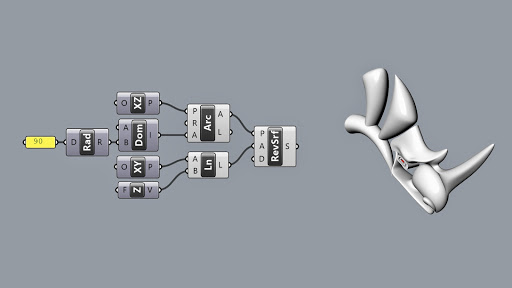I’ve recently launched my new course on Grasshopper for Rhinoceros. Maybe you are familiar with this parametric design software. It is widely used in innovative architectural design offices and in architectural schools and research. It allows complete control over geometry generation, using the Rhinoceros modelling system, but controlled from a Visual Programming workflow.
Grasshopper is a free add-in for Rhinoceros and currently requires the Windows version of Rhinoceros (commercial, educational or trial).

What can you expect to learn?
In this course, you apply a basic knowledge of 3D modelling into a Parametric Approach.
Instead of creating one or two design models for a project, you learn how to develop an interactive, adapting model, controlled by a few chosen design parameters and capable of generating a wide range of design variants. Use the clever components to define an efficient and powerful system of interconnected components, creating geometry and applying geometric and mathematical operations.
Learn the same techniques innovative architectural offices apply, such as Foster of Hadid, to develop their complex designs.
Use a combination of modeled and generated geometry and still allow visual, artistic control over the result.
In a series of around two hours of video tutorials and a few short quizzes we learn Grasshopper, a parametric design add-in for McNeel Rhinoceros, which can be freely used, provided you have access to Rhinoceros.
- The first lectures will explain the user interface and the basic concepts to control numbers, points and curves.
- We extend this into 3D Surfaces and look at different approaches for panelling and subdividing of a façade or roof model.
- There will be an extensive section where you’ll create a model that is similar to a twisted tower design by Calatrava, built in Sweden, step-by-step.
- And finally, we’ll take a look at options for generative modelling, where we look at optimisation, using the Galapagos module.
So please join us and discover this widely popular visual programming system and discover how you can create some surprising results with ease.
Discount Coupon
Here is a coupon code to get you the course for $9 instead of $49. Valid while supplies last…
Comments
Post a Comment